Verona
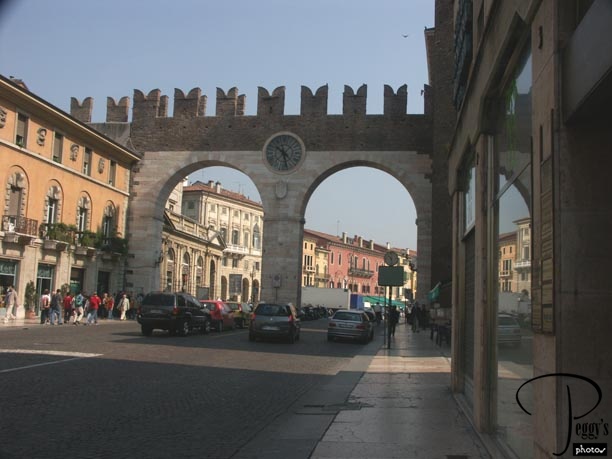
Today, we drove south from Bolzano to Verona, which is in the Veneto Region of Italy. We drove into Verona through the old city gate.

Verona
Verona
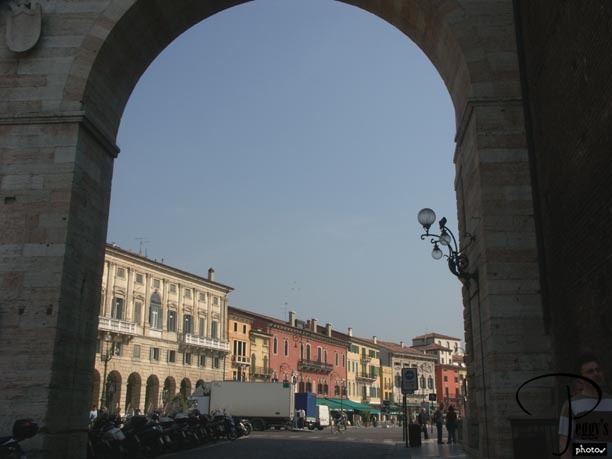
Another view through the old city gate. The view is of Piazza Bra.

Verona
Verona
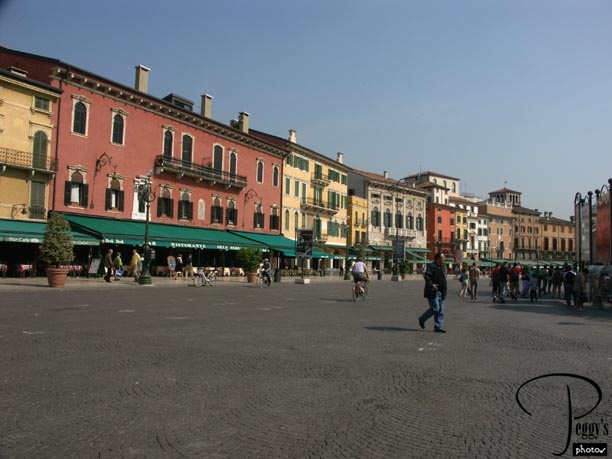
Piazza Bra.

Verona
Verona
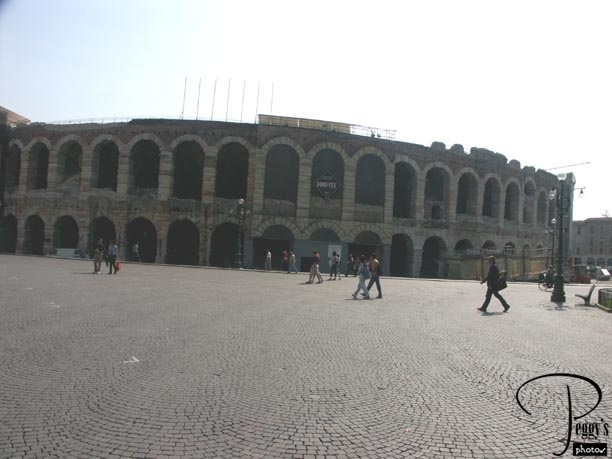
Verona is famous for its 1st–century Roman Arena which is still used today for Shakespeare plays, operas, and concerts. However, we could not go inside it as it is presently being worked on. It is in the Piazza Bra.

Verona
Verona
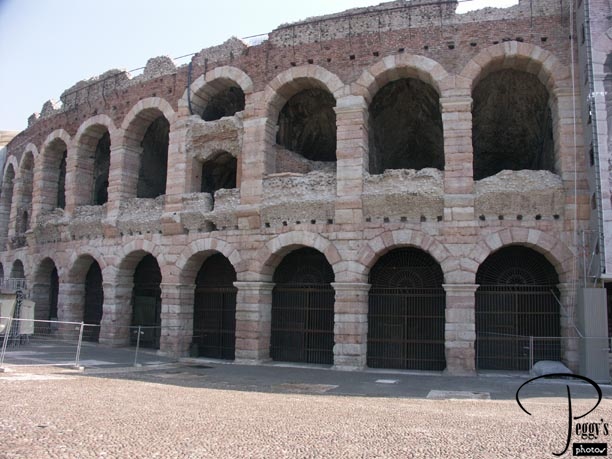
Close–up view of the arena.

Verona
Verona
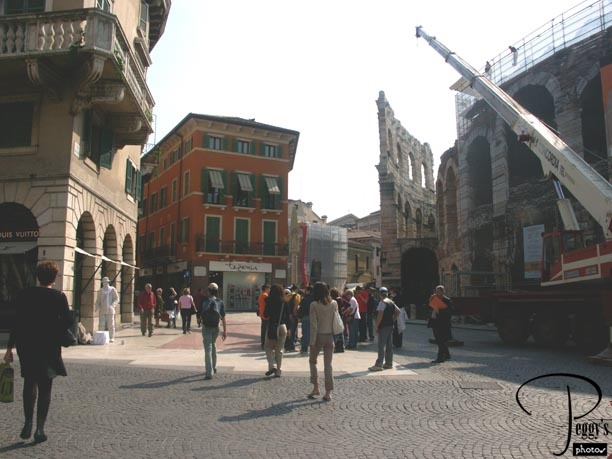
Backside of the arena.

Verona
Verona
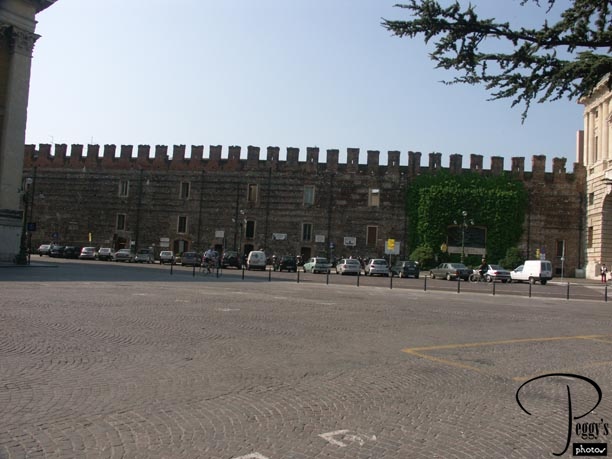
Part of the old city wall on one side of the Piazza Bra.

Verona
Verona
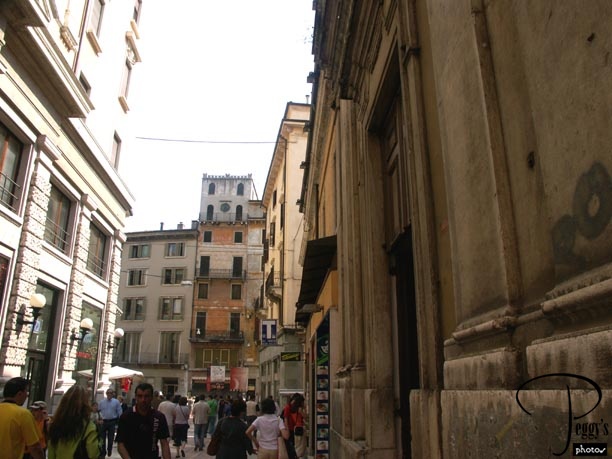
I walked along the Via Mazzini which connects the Piazza Bra with the Piazza delle Erbe. Some of the buildings along the Via Mazzini.

Verona
Verona
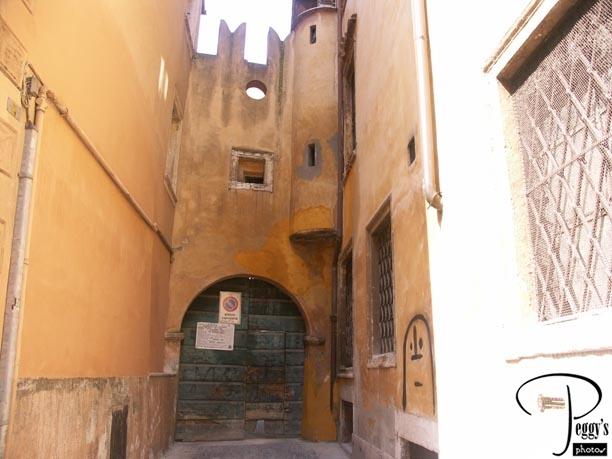
Alleyway off the Via Mazzini.

Verona
Verona
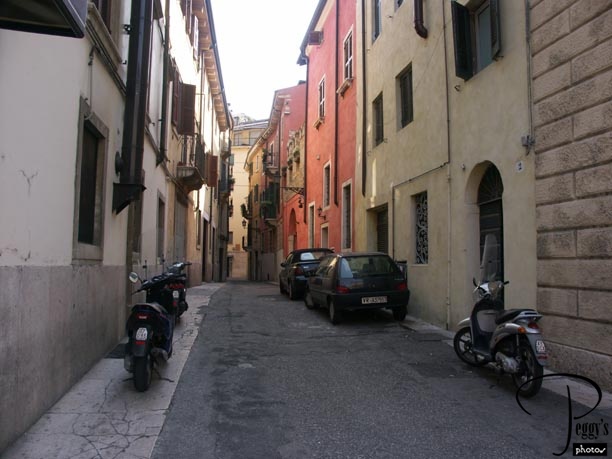
Street scene off the Via Mazzini.

Verona
Verona
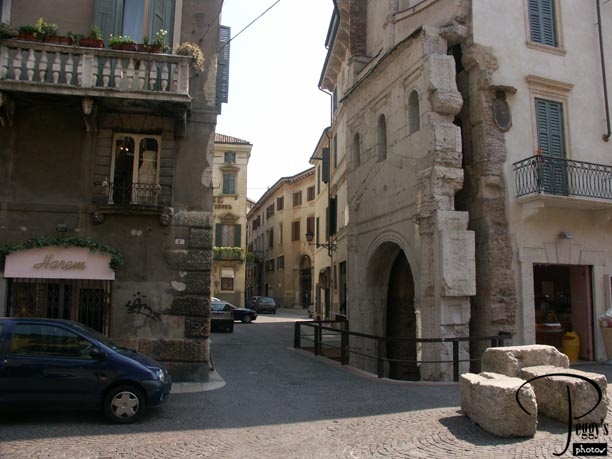
Interesting buildings that I saw along the way.

Verona
Verona
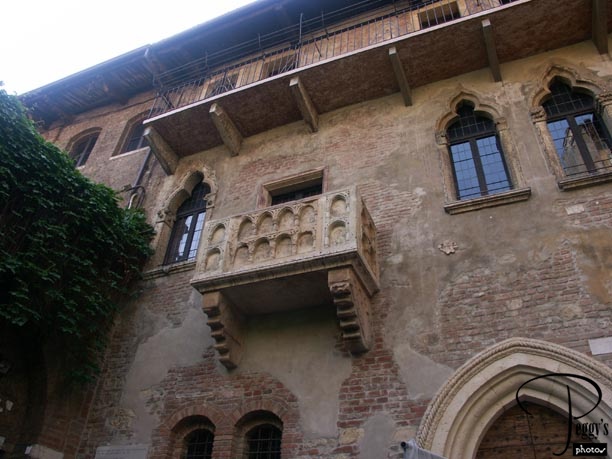
Verona is known as the City of Love as this is the city of Romeo and Juliet. There really were Capuleti and Monterchi families living in Verona but it is doubtful that the story of Romeo and Juliet ever really happened. However, all tourists flock to see the Romeo and Juliet balcony at the Casa di Guilietta (Juliet’s House), which probably wasn’t even the Capuleti villa. The balcony is reached through a small alley.

Verona
Verona
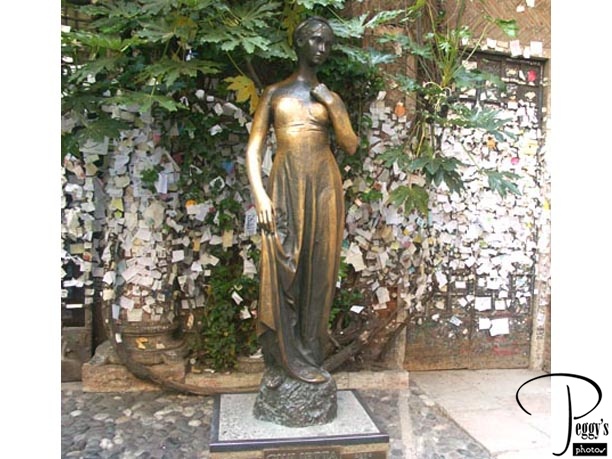
The 20th–century statue of Juliet. If you rub her right breast, you are then sure to find your true love. Note all the love notes on the wall behind the statue. There were love notes left everywhere in this very little square. I thought it was very nice.

Verona
Verona
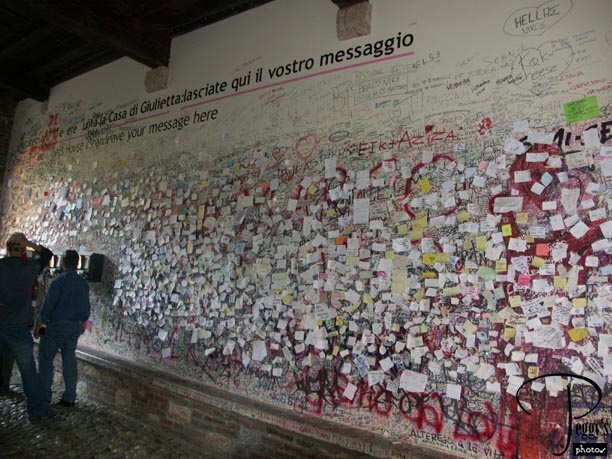
Board on the side of alleyway leading out from the balcony square. In English, you are invited to Post Your Message Here.

Verona
Verona
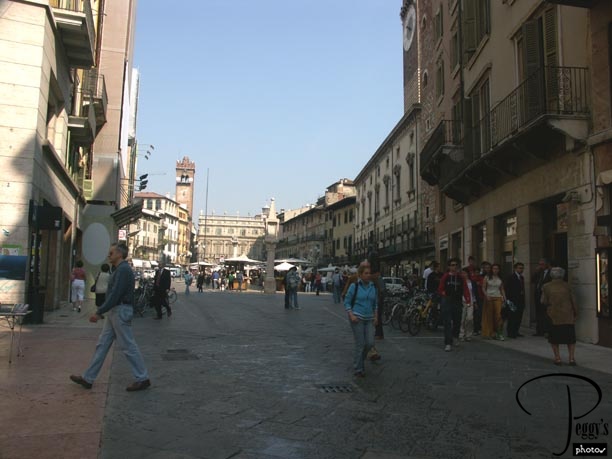
Entrance to the Piazza delle Erbe which is about a block from Juliet’s House. This piazza is the former site of the Roman Forum of Verona.

Verona
Verona
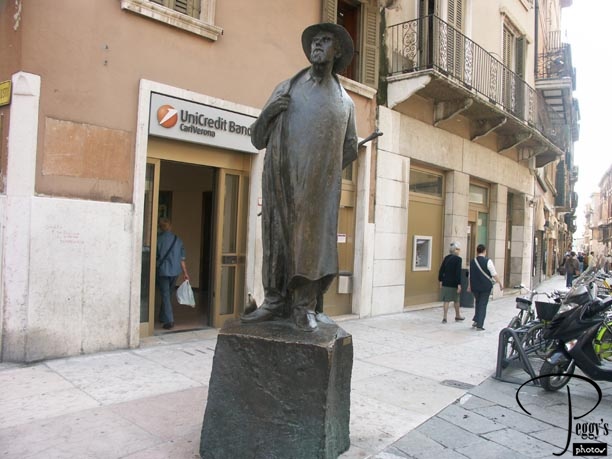
Right before the piazza is this interesting statue of Berto Barbarani, who was a poet who lived between 1872 and 1945.

Verona
Verona
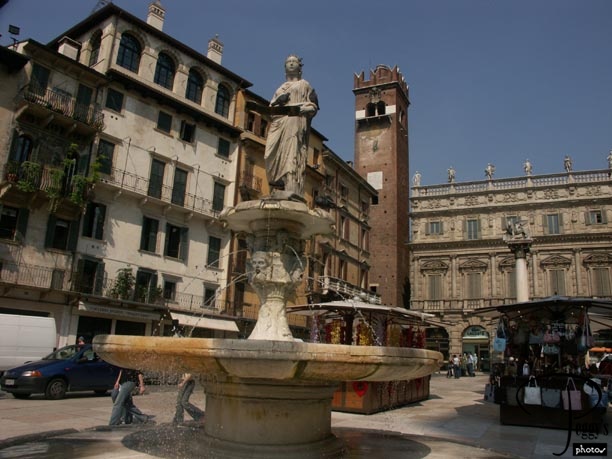
The Virgin of Verona in the Piazza delle Erbe. The fountain in the photo is from the 14th century but the statue dates back to Roman times. The head and arms had fallen off the statue and a new head and arms were added, making it into the Virgin of Verona statue.

Verona
Verona
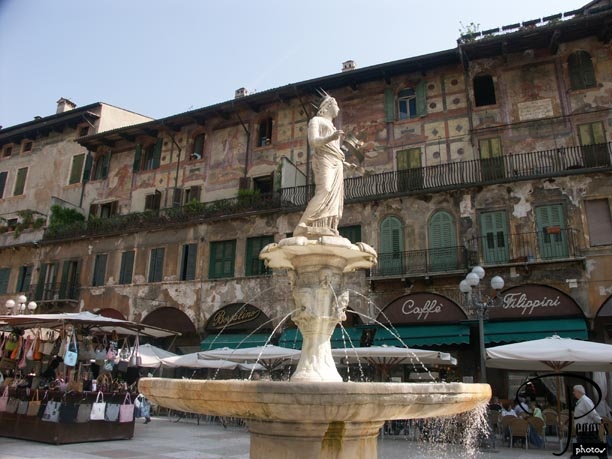
Another view of the Virgin of Verona with a very interesting building behind her.

Verona
Verona
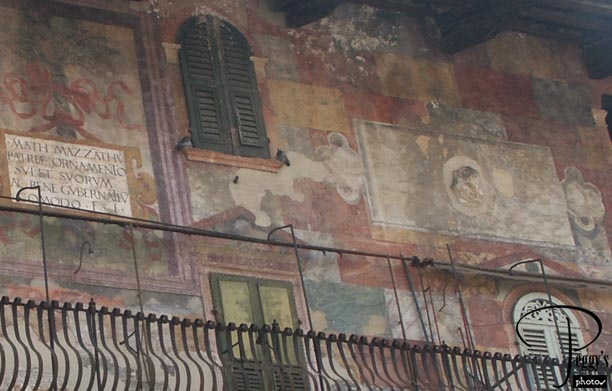
Close–up of the building.

Verona
Verona
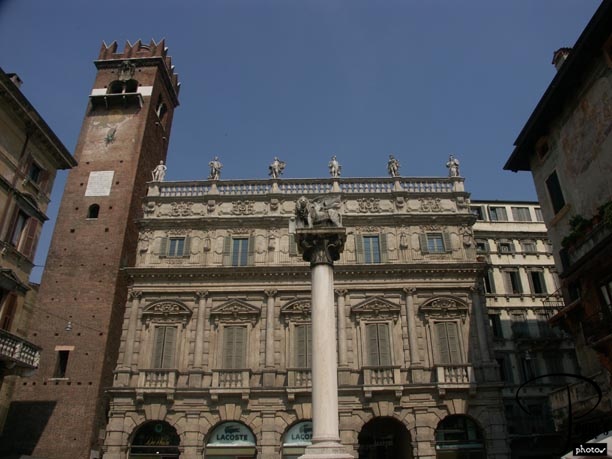
Another view of Piazza delle Erbe. That is a lion on top of the statue, specifically the Venetian Lion. Venice conquered Verona is 1405 and this statue is a reminder of this to the people of Verona.

Verona
Verona
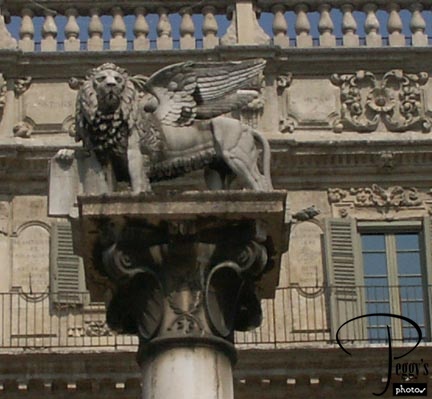
Close–up of the lion.

Verona
Verona
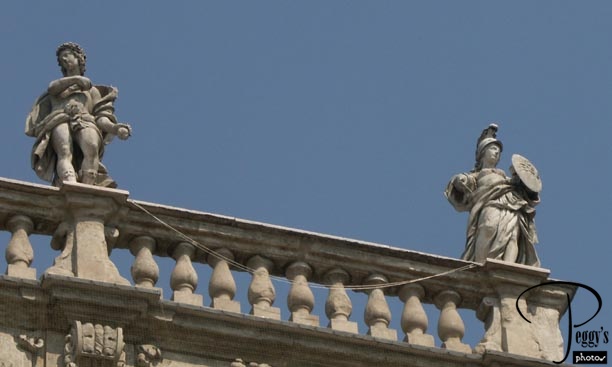
Close–up of the statues on top of the building.

Verona
Verona
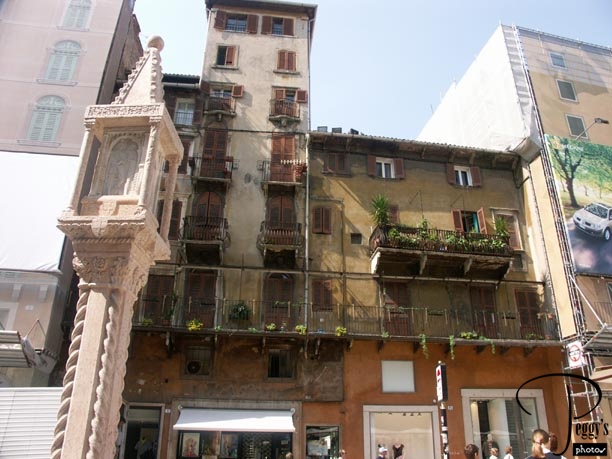
Other buildings in the Piazza delle Erbe.

Verona
Verona
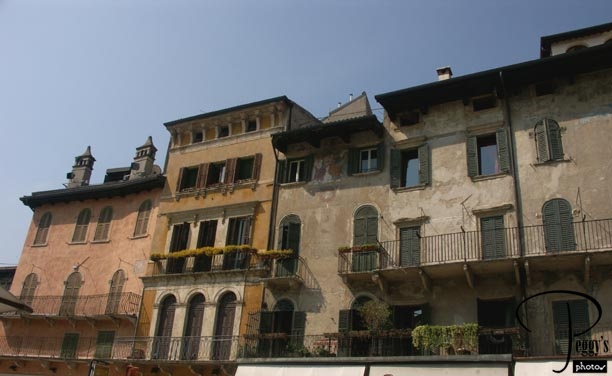
More buildings in the Piazza delle Erbe.

Verona
Verona
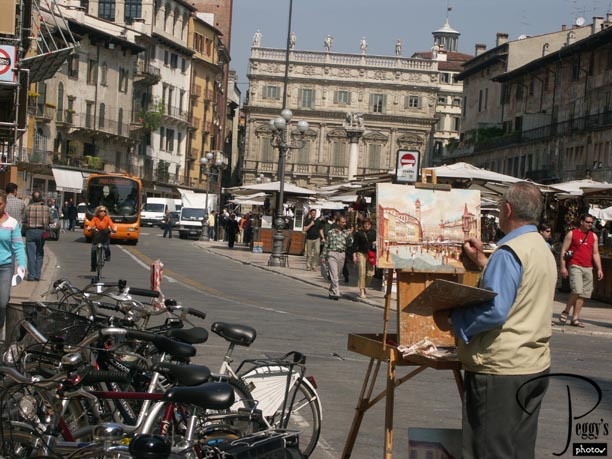
Artist at work at the Piazza delle Erbe.

Verona
Verona
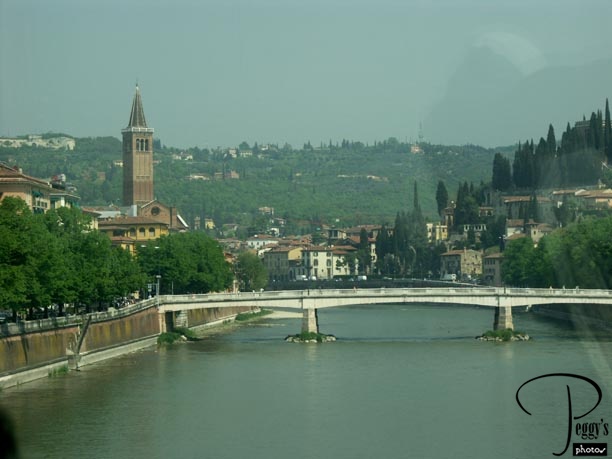
After our short stay here, we left Verona to head farther south to Bologna. You could easily spend a delightful full day in Verona just walking around. There is much to see here. This photo is of the Adige River, taken from the bus as we left Verona.

Verona
Italian Farm House
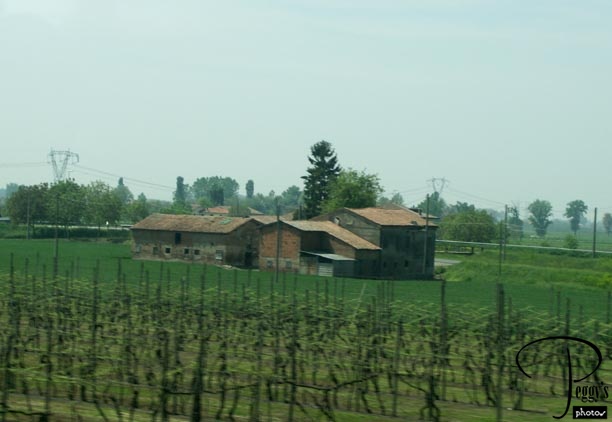
One of the many farm houses that we passed on our way to Bologna.

Italian Farm House
Italian Farm House
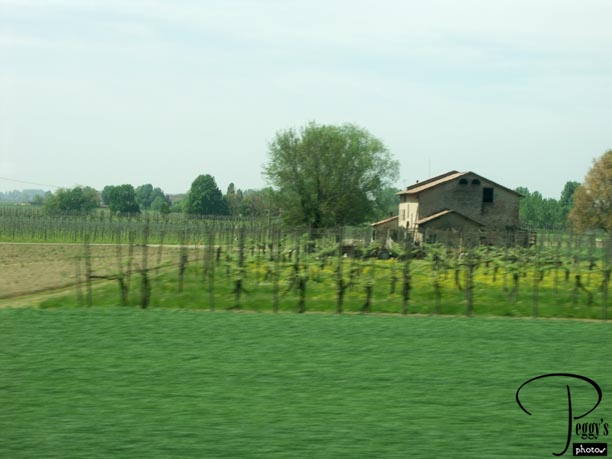
Another Italian farm house.

Italian Farm House
Basilica of San Petronio
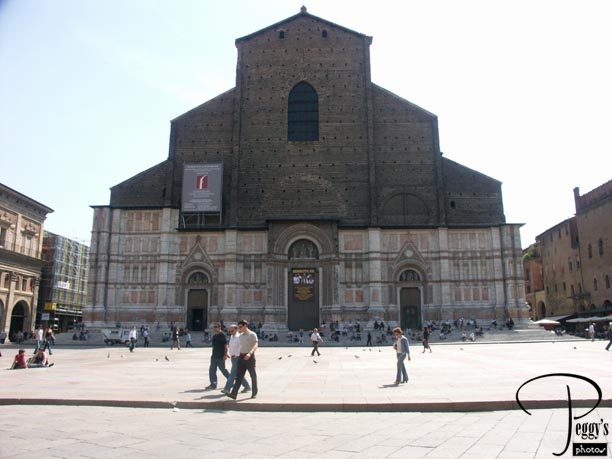
We arrived in Bologna in the afternoon and picked up a local guide to show us the sights here. First, to the Basilica of San Petronio. It is brick, medieval church which dates back to 1390. It is on the Piazza Maggoire.

Basilica of San Petronio
Basilica of San Petronio
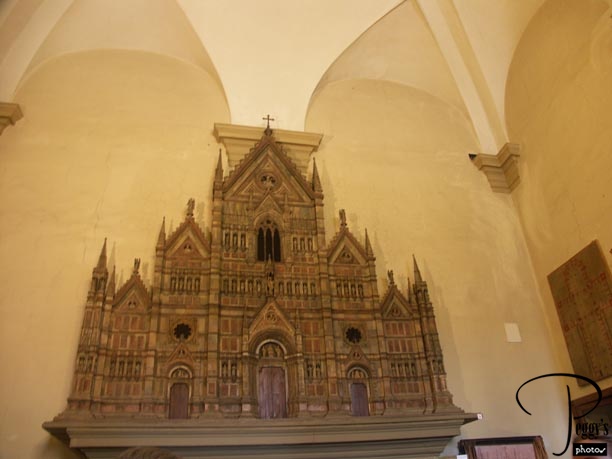
The original design of the basilica. It was to be larger than St. Peter’s Basilica in Rome. However, while San Petronio was being built, Rome stopped funding it, as it was believed that Rome didn’t want another church to be larger than St. Peter’s.

Basilica of San Petronio
Basilica of San Petronio
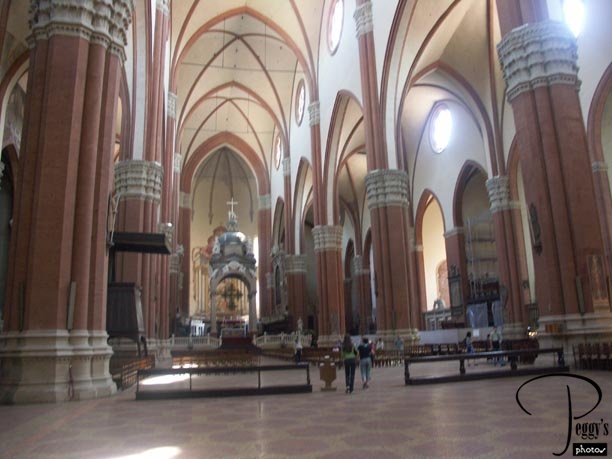
Inside the basilica.

Basilica of San Petronio
Basilica of San Petronio

This sundial dates back to the 17th century to the great astronomer Cassini. The time of the day can be determined by the sun following a line on the floor of the basilica.

Basilica of San Petronio
Basilica of San Petronio
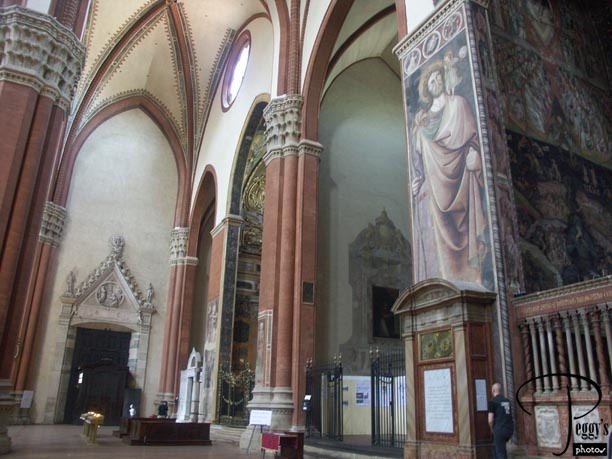
There are frescoes to the right. Originally, there were more frescoes covering the church but they were painted over. The church doesn’t have enough money to remove the outer layer of paint. But in one of the frescoes to the right of the photo is a scene with Mohammad portrayed as being in Hell. After 9/11, the church received a message that the church would be destroyed because of this fresco scene.

Basilica of San Petronio
Basilica of San Petronio
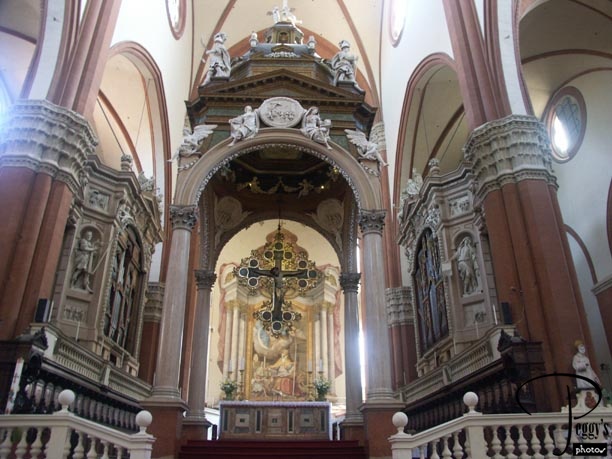
Inside the basilica.

Basilica of San Petronio
Basilica of San Petronio
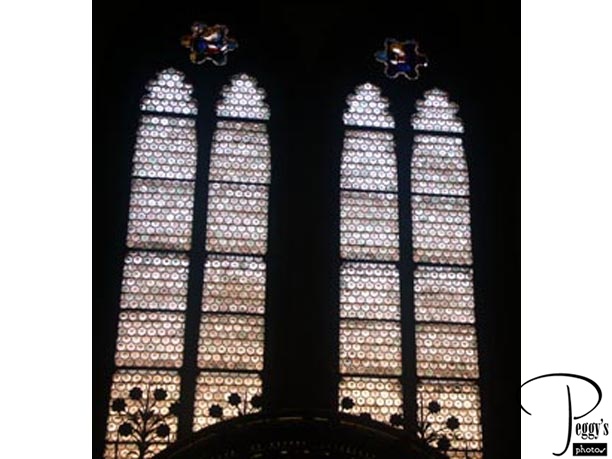
Unusual windows.

Basilica of San Petronio
Piazza Maggiore
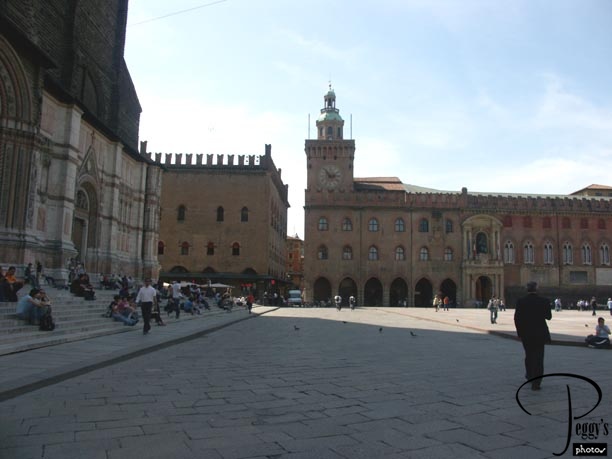
Piazza Maggiore: The Basilica of San Petronio is on the left in this photo and the Palazzo del Comune (town hall) is on the right.

Piazza Maggiore
Piazza Maggiore
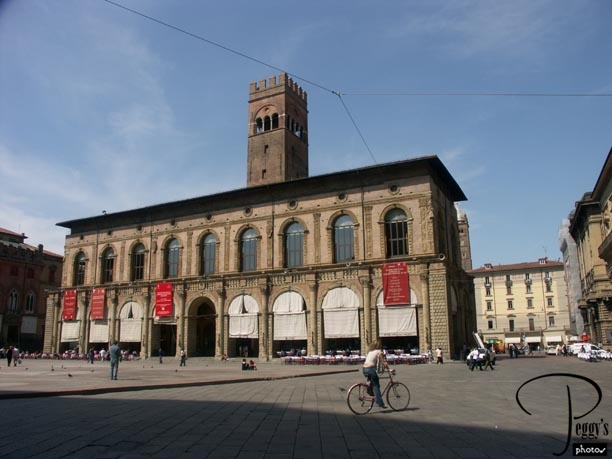
The Palazzo de Re Enzo, built between 1244 and 1246, is also on the Piazza Maggiore across from the Basilica of San Petronio.

Piazza Maggiore
Piazza Maggiore
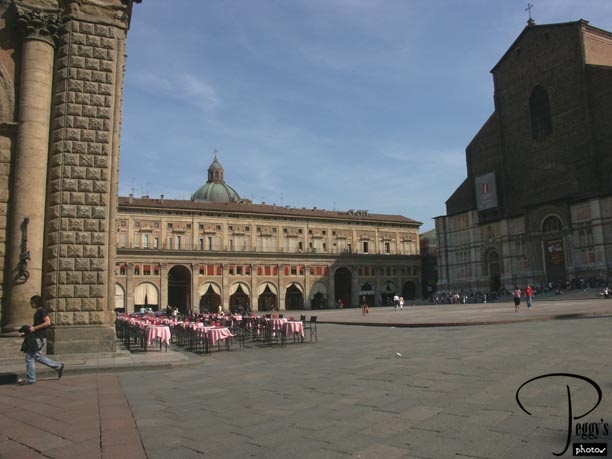
Also on the Piazza Maggiore, to the left of the Basilica of San Petronio, is the Palazzo dell’ Archiginnasio, which was the first location of the University of Bologna.

Piazza Maggiore
Piazza Maggiore
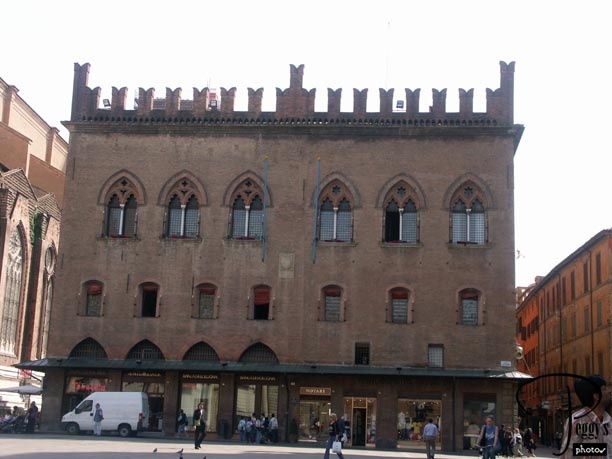
This building is to the right of the Basilica of San Petronio.

Piazza Maggiore
Palazzo del Commune
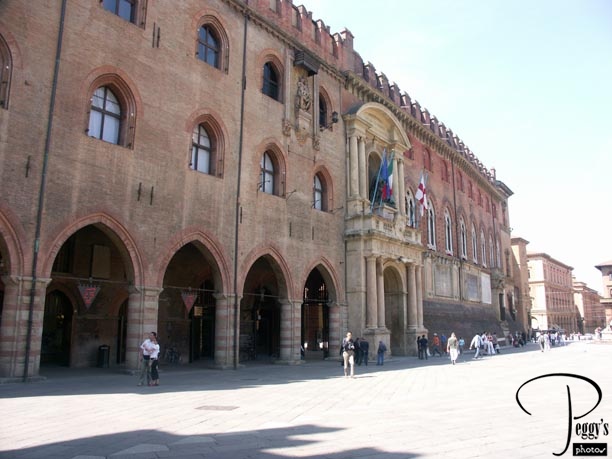
The Palazzo del Commune (town hall) was built in three sections. The first, on the left, was built in 1202. The middle, reddish section was added in 1425, and the last section to the right was added in the 16th century.

Palazzo del Commune
Palazzo del Commune
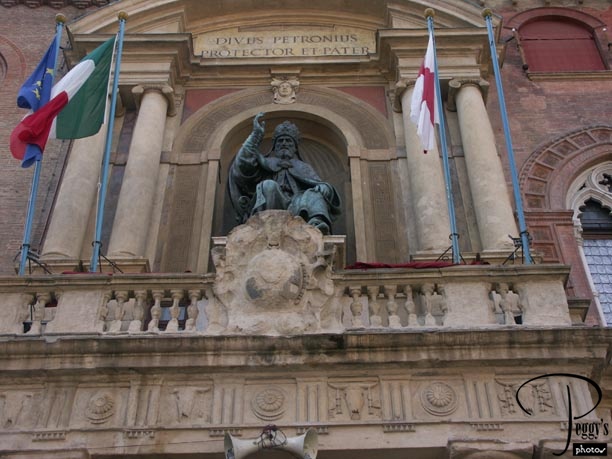
This bronze statue on the side of this building is of Pope Gregory. He was from Bologna and developed the Gregorian Calendar in 1582, which we still use today.

Palazzo del Commune
Fountain of Neptune
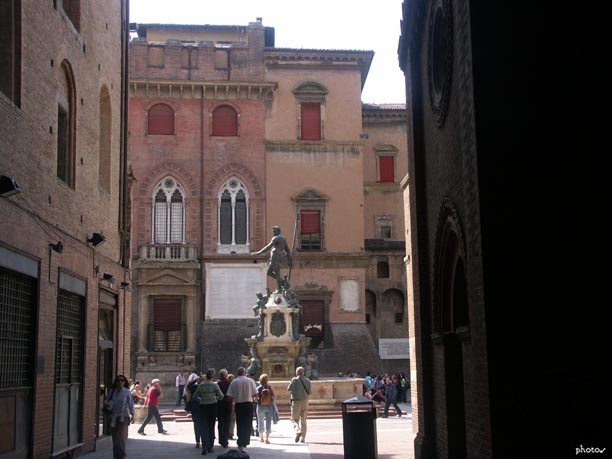
View of the Fountain of Neptune (the Fontana di Nettuno), which dates from 1566 and is in front of the Palazzo de Commune. In the photo, you can see the two different colors of the later–added sections.

Fountain of Neptune
Fountain of Neptune
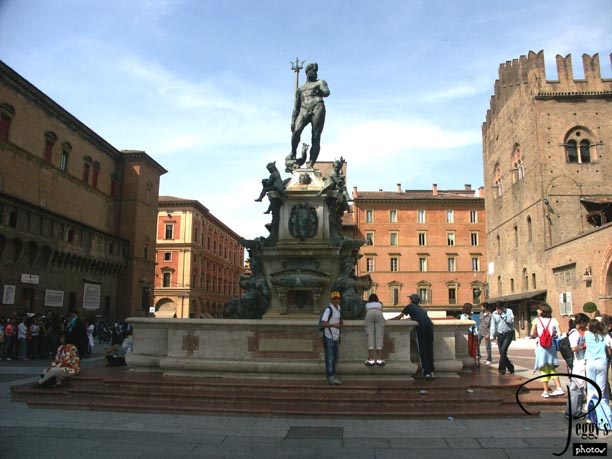
Another view of the fountain.

Fountain of Neptune
Fountain of Neptune
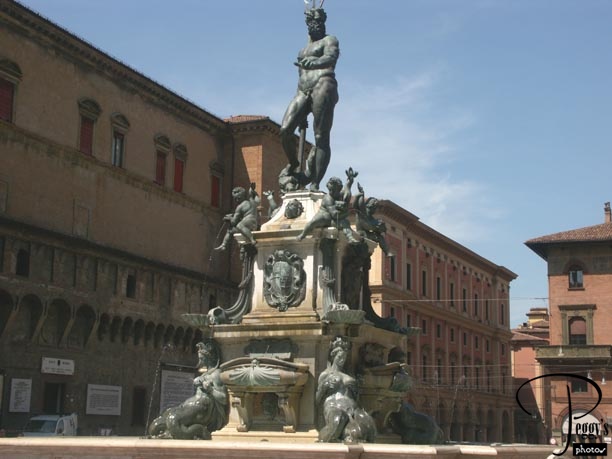
A closer–up view of the fountain. At the bottom of the statue of Neptune are the Four Holy Weepers of the World.

Fountain of Neptune
Fountain of Neptune
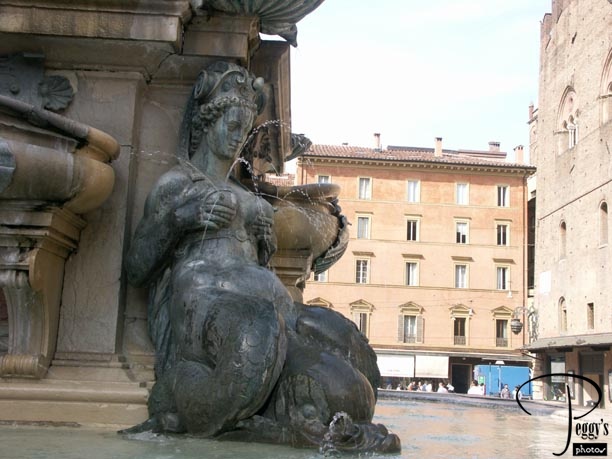
Close–up of one of the weepers. Don’t even ask if that is really water spouting out of where it appears to be. It is!

Fountain of Neptune
Towers
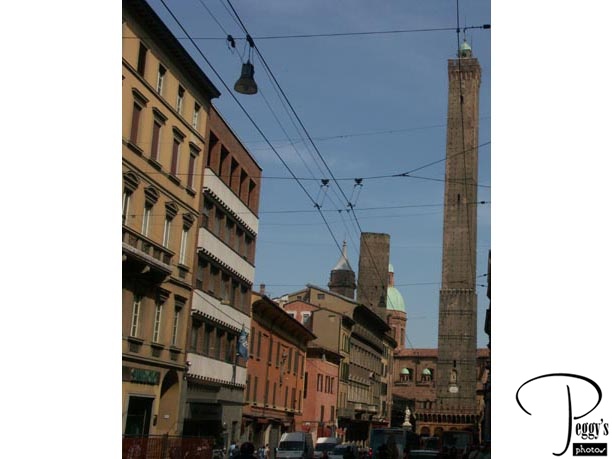
These are two of the few remaining towers built for protection in the 12th century by the important families in Bologna. Originally, there were about 200 of these towers. The tallest tower of the two in the photo is named Torre Asinelli and today it is the 4th highest tower in Italy. You can climb up to its top: 500 steps. The other tower is the Torre Garisinda.

Towers
University of Bologna
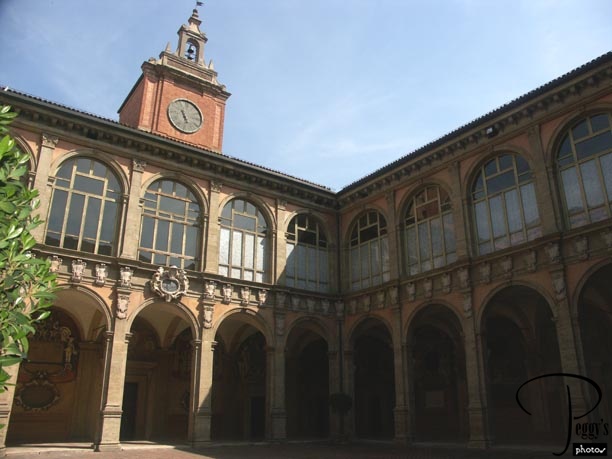
Today’s Palazzo dell’ Archiginnasio was the first seat of the University of Bologna. The University is no longer located in this building. The University of Bologna was founded in 1558. This photo shows the inner courtyard of the University.

University of Bologna
University of Bologna
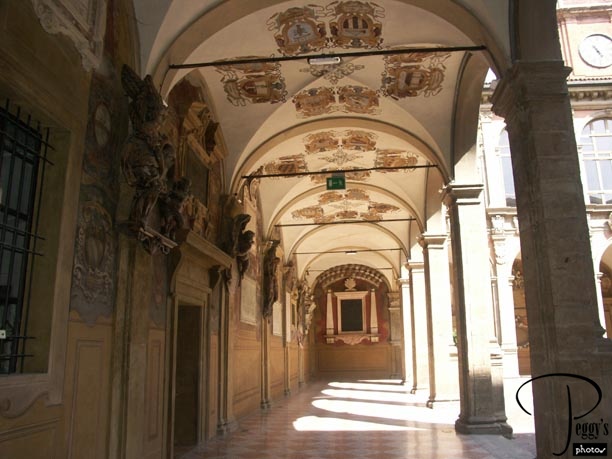
Each student has his (her) family’s coat of arms painted on the ceiling or walls.

University of Bologna
University of Bologna
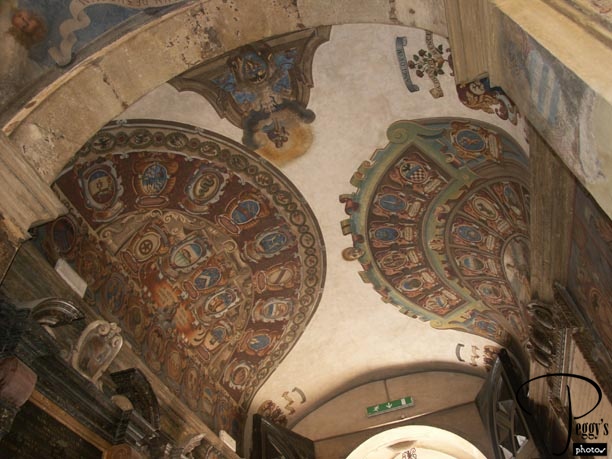
More coats of arms.

University of Bologna
University of Bologna
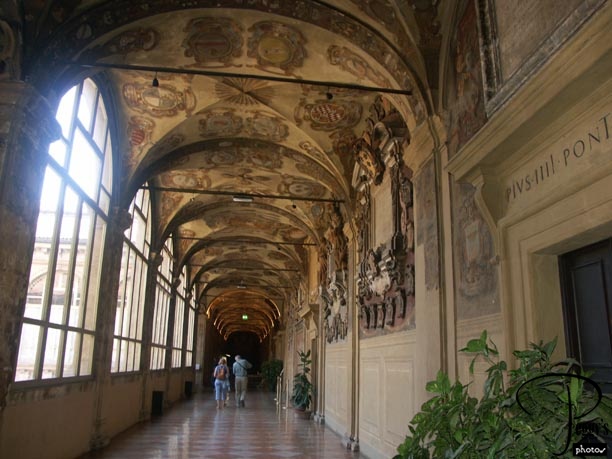
Corridor.

University of Bologna
University of Bologna
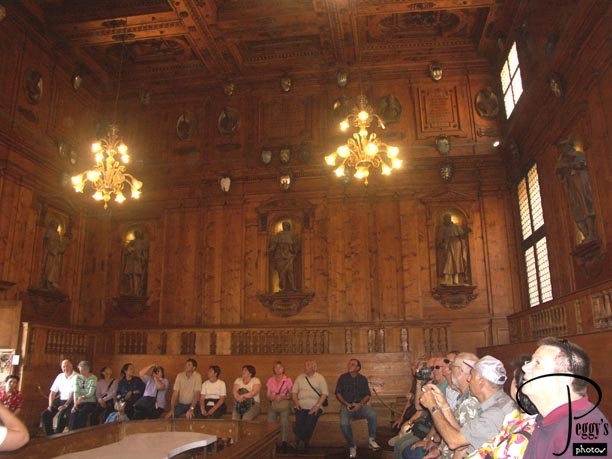
Here is our tour group getting ready for our anatomy lecture. Not really, but this is the room where anatomy was taught. You can see part of the dissection table in the photo.

University of Bologna
Bologna
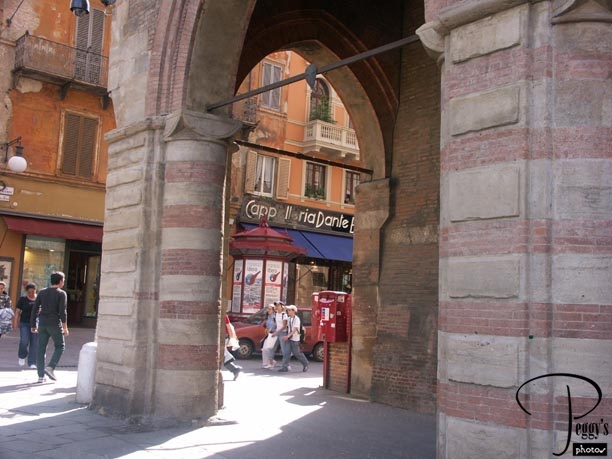
After our tour of Bologna, we had some free time to walk around. Here are some buildings I saw on my walk.

Bologna
Bologna
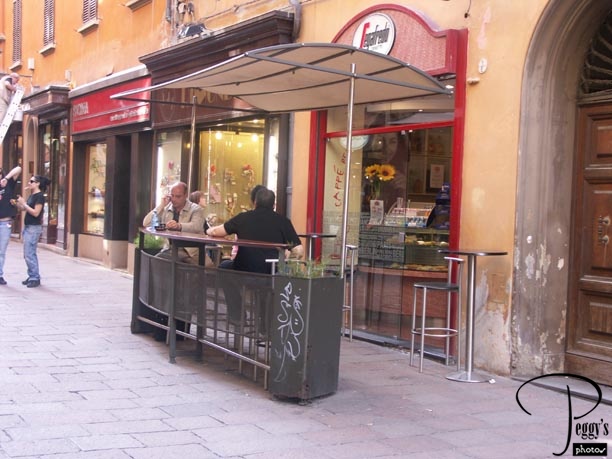
I sometimes wondered where our tour conductor, Paolo, disappeared to when we had free time. Oh, here he is, enjoying a cup of expresso and talking on his cell phone––probably confirming our tour arrangements.

Bologna
Bologna

Street market.

Bologna
Bologna
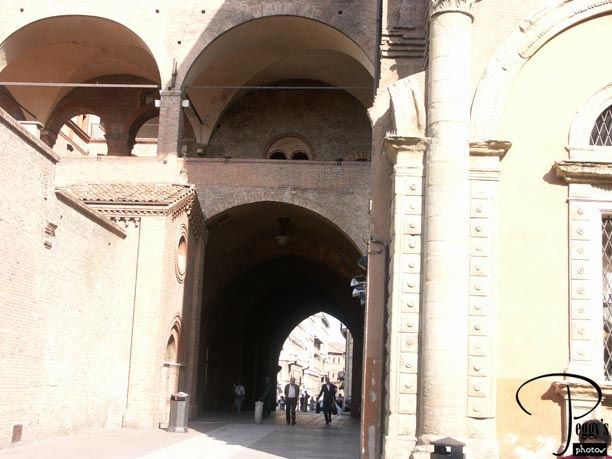
Passageway.

Bologna
Palazzo de Rossi
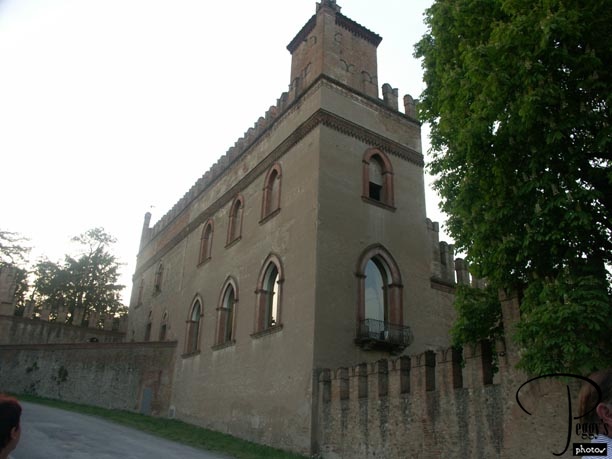
We finished sightseeing and checked into our hotel. Tonight, there was an optional Gourmet Dinner with Drinks for 51 Euros at a 13th–century (my recollection of the century) castle. Bologna is the gastronomical capital of Italy and I was very interested in trying a special Bolognese dinner. Photo of the castle where we were to have our dinner.

Palazzo de Rossi
Palazzo de Rossi
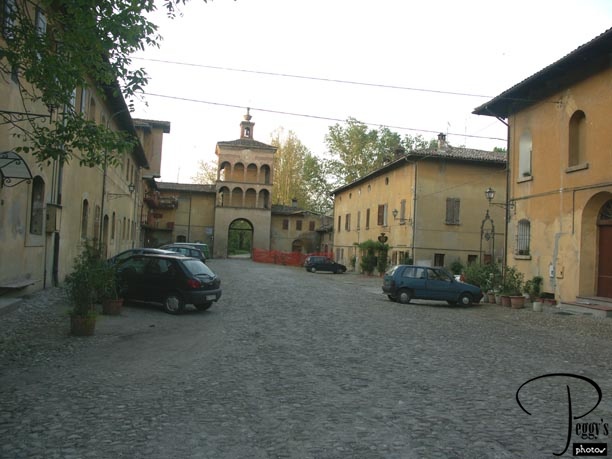
We first had drinks and some appetizers in the courtyard and then went inside the castle to have our dinner. When we looked at the menu, we thought we would have to decide which dishes we would want––no, all the dishes on the menu were to be served to us. Here is the Menu––Starting off with: Green asparagus and culatello ham in a crunchy crust; Mortadella flan with our “brioche” bread; Almonds, rocket and pecorino cheese salad; Goat fresh cheese on a raw artichoke salad; and sweet and hot stuffed peppers. Continuing with: Tortelloni with ripe cherry tomatoes and chives; and Pasta cake with eggplant and mozzarella cheese on a basil pesto sauce. Then: Roast stuffed guinea fowl with runner beans tart and onion stew; and Roast baby pork in a spring mushroom sauce with baked potatoes and grilled vegetables. Finishing with: Fresh cream and balsamic bavaroise with strawberries and hazelnut cake. Wines: Il Carlino Brut; Bologna hills Sauvignon blanc–Gaggioli; and Bologna hills Cabernet Sauvignon ’02/II Rosso del Borgo–Bonzara. I couldn’t eat it all but what I could finish was very very very good!
